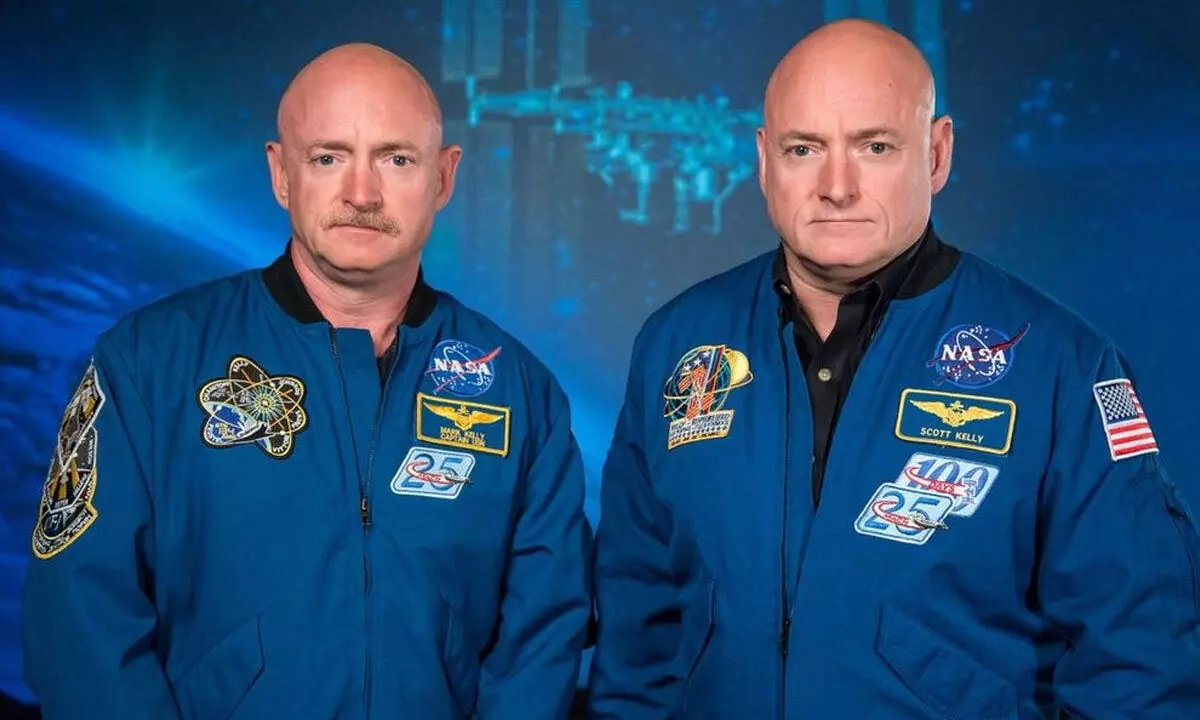Even short trips to space can change an astronaut’s biology

Only about 600 people have ever travelled to space
Fort Collins: Only about 600 people have ever travelled to space. The vast majority of astronauts over the past six decades have been middle-aged men on short-duration missions of fewer than 20 days. Today, with private, commercial and multinational spaceflight providers and flyers entering the market, we are witnessing a new era of human spaceflight. Missions have ranged from minutes, hours and days to months. As humanity looks ahead to returning to the Moon over the coming decade, space exploration missions will be much longer, with many more space travellers and even space tourists. This also means that a wider diversity of people will experience the extreme environment of space – more women and people of different ethnicities, ages and health status. Since people respond differently to the unique stressors and exposures of space, researchers in space health, like me, seek to better understand the human health effects of spaceflight. With such information, we can figure out how to help astronauts stay healthy both while they’re in space and once they return to Earth.
As part of the historic NASA Twins Study, in 2019, my colleagues and I published groundbreaking research on how one year on board the International Space Station affects the human body. I am a radiation cancer biologist in Colorado State University’s Department of Environmental and Radiological Health Sciences. I’ve spent the past few years continuing to build on that earlier research in a series of papers recently published across the portfolio of Nature journals. These papers are part of the Space Omics and Medical Atlas package of manuscripts, data, protocols and repositories that represent the largest collection ever assembled for aerospace medicine and space biology. Over 100 institutions from 25 countries contributed to the coordinated release of a wide range of spaceflight data.
The NASA Twins Study: NASA’s Twins Study seized on a unique research opportunity. NASA selected astronaut Scott Kelly for the agency’s first one-year mission, during which he spent a year on board the International Space Station from 2015 into 2016. Over the same time period, his identical twin brother, Mark Kelly, a former astronaut and current US senator representing Arizona, remained on Earth. My team and I examined blood samples collected from the twin in space and his genetically matched twin back on Earth before, during and after spaceflight. We found that Scott’s telomeres – the protective caps at the ends of chromosomes, much like the plastic tip that keeps a shoelace from fraying – lengthened, quite unexpectedly, during his year in space. When Scott returned to Earth, however, his telomeres quickly shortened. Over the following months, his telomeres recovered but were still shorter after his journey than they had been before he went to space. As you get older, your telomeres shorten because of a variety of factors, including stress. The length of your telomeres can serve as a biological indicator of your risk for developing age-related conditions such as dementia, cardiovascular disease and cancer.
In a separate study, my team studied a cohort of 10 astronauts on six-month missions on board the International Space Station. We also had a control group of age and sex-matched participants who stayed on the ground. We measured telomere length before, during and after spaceflight and again found that telomeres were longer during spaceflight and then shortened upon return to Earth. Overall, the astronauts had many more short telomeres after spaceflight than they had before. One of the other Twins Study investigators, Christopher Mason, and I conducted another telomere study – this time with twin high-altitude mountain climbers – a somewhat similar extreme environment on Earth. We found that while climbing Mount Everest, the climbers’ telomeres were longer, and after they descended, their telomeres shortened. Their twins who remained at low altitude didn’t experience the same changes in telomere length. These results indicate that it’s not the space station’s microgravity that led to the telomere length changes we observed in the astronauts – other culprits, such as increased radiation exposure, are more likely.
Civilians in space: In our latest study, we studied telomeres from the crew on board SpaceX’s 2021 Inspiration4 mission. This mission had the first all-civilian crew, whose ages spanned four decades. All of the crew members’ telomeres lengthened during the mission, and three of the four astronauts also exhibited telomere shortening once they were back on Earth. What’s particularly interesting about these findings is that the Inspiration4 mission lasted only three days. So, not only do scientists now have consistent and reproducible data on telomeres’ response to spaceflight, but we also know it happens quickly. These results suggest that even short trips, like a weekend getaway to space, will be associated with changes in telomere length. Scientists still don’t totally understand the health impacts of such changes in telomere length. We’ll need more research to figure out how both long and short telomeres might affect an astronaut’s long-term health.
Telomeric RNA: In another paper, we showed that the Inspiration4 crew – as well as Scott Kelly and the high-altitude mountain climbers – exhibited increased levels of telomeric RNA, termed TERRA. Telomeres consist of lots of repetitive DNA sequences. These are transcribed into TERRA, which contributes to telomere structure and helps them do their job. Together with laboratory studies, these findings tell us that telomeres are being damaged during spaceflight. While there is still a lot we don’t know, we do know that telomeres are especially sensitive to oxidative stress. So, the chronic oxidative damage that astronauts experience when exposed to space radiation around the clock likely contributes to the telomeric responses we observe. We also wrote a review article with a more futuristic perspective of how better understanding telomeres and aging might begin to inform the ability of humans to not only survive long-duration space travel but also to thrive and even colonise other planets. Doing so would require humans to reproduce in space and future generations to grow up in space. We don’t know if that’s even possible – yet.
Plant telomeres in space: My colleagues and I contributed other work to the Space Omics and Medical Atlas package, as well, including a paper published in Nature Communications. The study team, led by Texas A&M biologist Dorothy Shippen and Ohio University biologist Sarah Wyatt, found that, unlike people, plants flown in space did not have longer telomeres during their time on board the International Space Station. The plants did, however, ramp up their production of telomerase, the enzyme that helps maintain telomere length. As anyone who’s seen “The Martian” knows, plants will play an essential role in long-term human survival in space. This finding suggests that plants are perhaps more naturally suited to withstand the stressors of space than humans. (The Conversation)
(The Conversation)
















